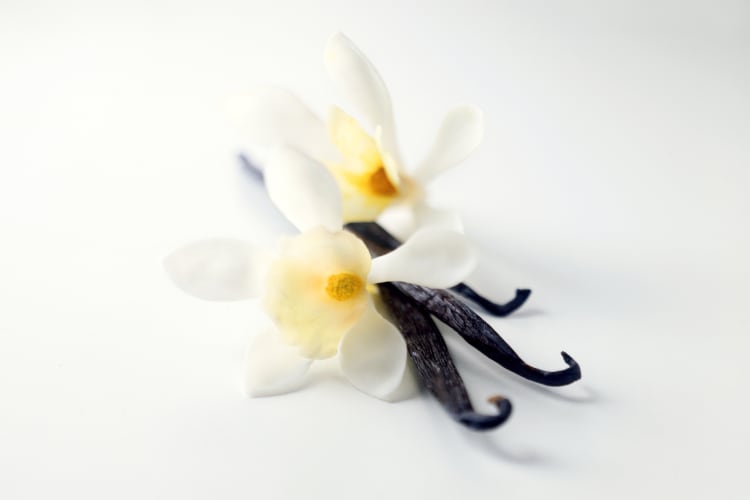Vanilla is one of the most popular spices in the world. It is also the second most expensive, largely due to the labour intensive and complex processes that go into harvesting and curing vanilla beans that are obtained from orchid plants.
According to Dr Diana Paola Forrero-Arcilia, a postdoc at Ohio State University, harvesting can take up to eight months. Curing and drying can take a further nine months.
Curing, Dr Forero-Arcila told a media briefing organised by the American Chemical Society (ACS), is the ‘most important’ step. “It is key for flavour development and the release of compounds that contribute to flavour.” The process consists of four steps: dipping (which releases enzymes); sweating (where flavour generation is initiated by enzyme-catalysed reactions); drying (where moisture is reduced and the product is stabilised); and conditioning (for final flavour development and aromatic maturation).
Two shortcuts are currently used to get around this long curing process: the use of quick curing methods or artificial vanilla. But, Dr Forero-Arcila said, these approaches fail to deliver the flavour complexity of high-quality vanilla. And her research suggests why.
They both focus on vanillin, Dr Forero-Arcila explained. Quick curing attempts to maximize the amount of vanillin in the cured bean, whereas artificial vanilla contains only one flavouring agent — lab-made vanillin.
Vanillin is indeed an important component of vanilla flavour – but it is far from being the sole influence on flavour perception, Dr Forero-Arcila’s research reveals. “It’s very important that we understand the complexity of vanilla’s flavour and try to identify the compounds that are behind that complexity,” she said.
Capturing the complexity of vanilla
Dr Forero-Arcila used an approach that she call 'untargeted flavoromics' to pinpoint which chemicals in vanilla bean extracts are the most important for the overall aroma and taste.
The researchers first made extracts from 15 beans they sourced from various countries and that were cured differently. They then constructed a chemical profile of each type of bean and identified which compounds were present using techniques like gas and liquid chromatography.
This goes beyond most prior research into vanilla’s flavour, which has in the past focused on the analysis of volatile compounds which are basically the components associated with aroma. “Flavour is a complex sensation that includes a lot of different interactions around aroma, taste and other sensations you perceive when you are eating food. Providing a more holistic understanding of the molecules that contribute to this complexity of vanilla favour perception and the drivers of liking behind that opens an opportunity for further discovery and further optimisation.”
When the compounds were mapped and modelled, Dr Forero-Arcila’s research then set out to connect the dots between the chemical compounds identified and consumer liking, leveraging sensory data from consumers. The team asked more than 100 individuals to taste the samples and rate whether they liked or disliked the flavours.
By charting the relationship between chemical profiles and taste ratings, the researchers were able to identify 20 compounds that are the ‘main drivers’ behind of liking.
Of these compounds, some, like vanillin, were expected. “Some of the compounds we identified are well-known vanilla components; however, this is the first report of them impacting consumer acceptability,” Dr Forero-Arcila observed.
Additionally, several compounds important for the flavour were completely unknown. The researchers are still analysing these novel vanilla compounds to determine the final structures, but they have observed that the compounds have phenolic and aglycone parts. Dr Devin Peterson, the project’s principal investigator, revealed that the research has identified two non-volatiles that drive liking and two that drive disliking. One example is anisaldehyde, which has a floral aroma and is produced during the curing process from a previously unknown precursor.
While acknowledging that aroma is an important characteristic that drives vanilla flavour perception, Dr Peterson added: “The other components of flavour perception that are important for overall consumer behaviour is something we are going to be able to demonstrate in a novel way.”
Improving vanilla quality and building value
Speaking at the ACS Fall 2022 conference, Dr Forero-Arcila said the research findings will be applicable to the food and agricultural industries. “This information will give tools to the whole vanilla supply chain from farmers to industries, which can include strategies for breeding and curing processes as well as improving the formulation of products to compete with high quality vanilla goods and secure consumer liking and acceptance,” she told the briefing.
The researchers think that the profile they have developed could help producers and farmers identify high-quality, valuable extracts, and price those extracts to match their quality. “The more you understand about how to make the materials more valuable, the more that value should flow through the whole system,” Dr Peterson suggested.

